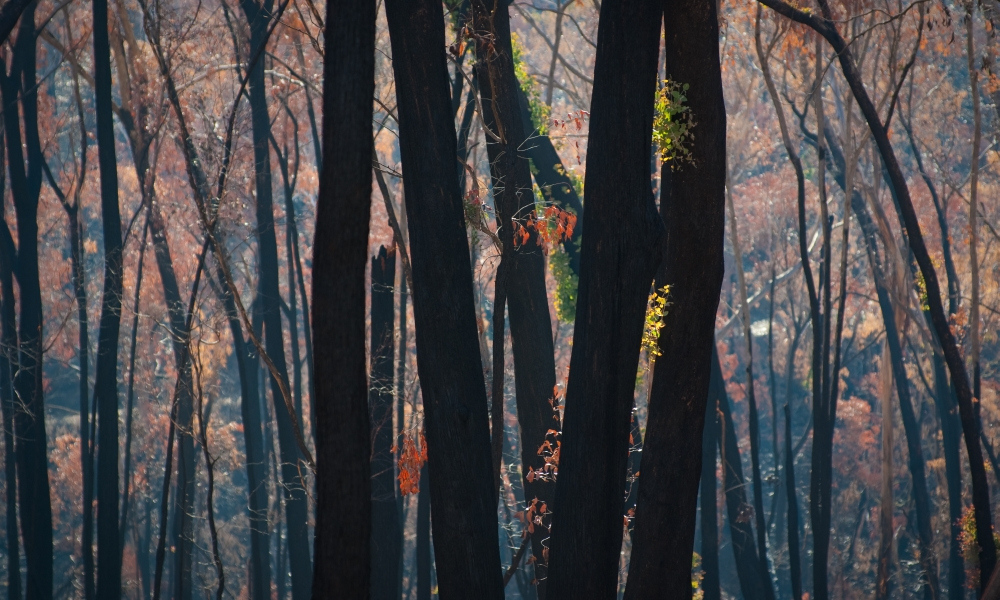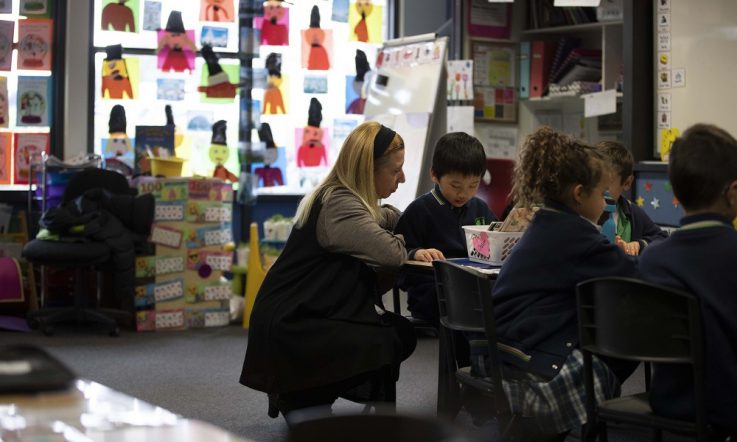Bushfire recovery in schools
As schools return after a summer break marred by tragedy, learning communities around the nation will want to understand how they can best support the children and young people in their care. Schools and early learning services are in a strong position to help children and young people bounce back after the bushfire disaster.
Many learning communities could be affected
The scale of the devastation has been difficult to comprehend, even for us as adults. Some have lost loved ones or property; others were evacuated from a holiday location under threat, many of us witnessed the bushfires through the media or felt the smoke haze cloak our cities and towns. As Australians, we've all been touched by this disaster in some way.
Beyond Blue consultant Professor Brett McDermott explains that children are particularly vulnerable to these disasters, in part due to the way they perceive threat. Seeing images of the bushfires can result in children thinking they are at risk when in fact, they are safe. This is one of the reasons schools across the country, not just those directly affected by bushfires, may wish to think about how they can support children's social and emotional wellbeing.
Talking about the news
The bushfires and the stories and images children have seen in the news may well come up in classrooms. Beyond Blue advises focusing children on the positive stories by talking about the volunteers, communities coming together, donations from across the world and how they can contribute.
Children at Bowraville Central School raised funds late last year to help communities in the Dorrigo region in New South Wales that were ravaged by fires. The children dressed up as emergency workers and farmers and brought a gold coin donation. They also baked Anzac biscuits to raise funds and donated food and farming equipment to help those affected by the fires.
Children can feel worried and powerless during these times and focusing children on how they can help points their energy in a positive direction.
Returning to normal life
Strathewen Primary School in Victoria, which burnt down in the Black Saturday disaster in 2009, set up a temporary school in one day. Their story of courage and perseverance is being acted out by other schools across the country as I write this article.
Evidence suggests that establishing or returning to routine is one of the best things schools can do for children affected by bushfires. Strathewen students still talk about the relief they felt when they were able to return to school.
Encouraging children to do things they enjoy and connecting with their friends is also important, even as communities are busy rebuilding physical infrastructure.
Strathewen teachers took their children on excursions to give them some respite from the devastation in their community following the fires. The teachers talked about how they felt relieved to see their students playing happily and having a break from worrying about their parents, who they knew were struggling.
Looking for signs of trauma
Everyone reacts differently to trauma and sometimes symptoms take some time to emerge. Likewise, some children take longer than others to move through the recovery process. Some students in Strathewen took many years to start talking about their feelings around the fires.
Over the coming weeks, months and years, teachers may notice changes in a child's behaviour or even their temperament. Symptoms of distress can include difficulty sleeping, trouble concentrating, being irritable and ‘on edge', focusing on ‘dark' and traumatic topics, sore stomach, headaches, and being fearful. Temperament changes include a child appearing generally more quiet and withdrawn, or more clingy and fearful.
Offering support to children
Beyond Blue encourages teachers to listen to children as they come to terms with the bushfires. This will give children the opportunity to explore their emotions and reach out for help.
There are a lot of resources currently being promoted to teachers to help them support children through the mental recovery process following the bushfires, and it can be hard to know which ones to use. Principals in areas previously affected by bushfire talk about feeling inundated by offers of help. They had to commit significant amounts of time to assess these offers and decide which sources of support were appropriate for their learning community.
With this in mind, Beyond Blue has developed a Bushfires resource pack for educators through its Be You initiative that is focused on schools and early learning centres. The resource pack makes it easy for teachers to find information that's relevant to them from trusted sources. Beyond Blue will also be deploying liaison officers to bushfire affected regions to help early learning services and schools navigate and access the local mental health supports and resources available to them.
Looking after yourself
I've been inspired by the stories of volunteers fighting the fires and helping communities rebuild and I'm sure I'm not alone. Many teachers will want to go above and beyond to help their community recover, but it's important to do this within your limits.
Principals who have gone through the bushfire recovery process advise getting the self-care of teachers right when schools are affected by disasters, as teachers can end up pushing themselves too hard.
Communities come together at times like this, but accepting help is an important way to make sure you can take time out for yourselves so that you're in a better position to provide support to those around you.
Adults need routine, just like children, to help them feel calm and secure, so try and get back into a daily rhythm as soon as possible. It can be challenging supporting children who are recovering from trauma, so making sure you debrief with trusted colleagues, family or friends is also important.
We're in this for the long haul
We are already hearing so many inspiring stories about how communities are beginning to rebuild, but the longer road to recovery for many will be around mental health.
Experts tell me that it could take years for many Australians to recover mentally from the bushfires. There are key points when communities affected by bushfires may be more mentally at risk and schools are ideally placed to bring families together at these times.
While many communities are being helped by volunteers and spirits are being buoyed by the inspiring stories of support now, experience tells us that by mid-year the initial push to rebuild communities will have died down. Residents will likely be coming to terms with how long it's going to take to piece together their lives. They may be feeling isolated as the volunteers leave and overwhelmed by the job that lies ahead. This is an ideal time for schools to bring a community together through events and other initiatives.
Schools also need to plan for children potentially becoming worried about bushfires and smoke haze as hot, windy conditions return towards the end of the year. Teachers can work throughout the year on building children's resilience in preparation for their fears returning.
The Be You initiative provides a mental health framework for schools and includes online training and fact sheets to help teachers support children's emotional wellbeing. The initiative is run by Beyond Blue – with delivery partners Early Childhood Australia and headspace – and is freely available to all schools and early learning services across Australia thanks to Commonwealth funding.
In the face of the devastation caused by this summer's bushfires I've been encouraged to hear children involved in the Black Saturday fires talking about how the recovery process has helped them grow as people. That's the opportunity available to all teachers, to use this awful experience as a way to teach children how to deal positively with their emotions and maintain good mental health.



